Narrowing down the list of design elements that I love to just ten items proved difficult – so in the end, I combined a few to fit everything into a neat list of 10. By contrast, choosing the first three items was very simple - they are so connected I even toyed with the idea of making them just one element: linen, slipcovers and seagrass. Most of the pictures of examples I show will usually have these three items together. The linen slipcover with seagrass rug is a look that I adore and am strongly drawn to – there is no explanation. Either you understand the attraction or you don’t. I can and do appreciate all styles of design from contemporary to the hip Hollywood Revival fad, but in the end, the one look that makes my heart skip a beat is linen slips with a seagrass rug. This look has appealed to me for so long now, I suspect it always will. In my very first apartment - over 30 years ago - I had a white Haitian cotton sofa (remember those?) with a crisp blue and white cotton print. And for my first house – I used a cream and taupe striped linen with slipcovers on just a few chairs, and a coir rug. As this was almost 19 years ago, I didn’t have the resources for sofa slipcovers or seagrass – that wouldn’t happen for another few years or so until the opening of Renea Abbott’s Shabby Slips, which really helped promote the slipcover craze in Houston.
White slipcovers and seagrass – a Houston tradition. Design by Lisa Epley.
Some many years ago, my friend hired interior designer Carol Glasser and promptly put down wall to wall seagrass in her older River Oaks house – both upstairs and down. The beauty of all that newly laid seagrass made an lasting impression on me. It smelled so fresh and still today – not much beats the scent of fresh, green seagrass. Houston is a seagrass town and I credit Glasser for first championing the look. Other great Houston designers were also early proponents of the natural textured rug – Pam Pierce, Babs Watkins, and Ginger Barber, among them. These four women, who without a doubt are some of the biggest talents in Houston design, share a certain aesthetic that relies heavily on slipcovers, linen, seagrass and antiques – both English and French. All four eschew anything false – all fabrics are natural, the antiques are not reproductions, and there is a mix of the high and the low. All four will confidently use a cotton check in the living room, along with seagrass, mixed in with priceless antiques from Europe and the finest of silk curtains. Their look is basically casual yet it is still quite elegant, a careful blend of rough textures with fine lined antiques. It’s a look that Gerrie Bremermann in New Orleans spent a career perfecting – in fact Bremermann often seems to be a Houston designer. And though all these designers certainly use other flooring options – plain colorless or muted striped dhurris, priceless Oushaks, or wool patterned carpets, seagrass remains a mainstay in their design. Regardless of the other choices available, Houston is firmly a seagrass town. I have long heard this rumor, which I believe to be true judging by the pictures from the Houston Real Estate web site:
Creative Flooring, a tony rug shop in Houston, sells more seagrass than any store in America!!
True? I have no idea, but certainly believable. Creative Flooring is owned by the gorgeously handsome (!!) Greg Manteris who just happens to be wed to darling Renea Abbott, owner of Shabby Slips – another very influential designer in town - so funnily enough - through their marriage they have cornered the slipcover and seagrass market. They need to have children – I can’t imagine how beautiful they will be!!
 The very talented Carol Glasser in her former house with wall to wall seagrass. Glasser was one of the first in Houston to introduce seagrass.
The very talented Carol Glasser in her former house with wall to wall seagrass. Glasser was one of the first in Houston to introduce seagrass.
Why seagrass? I receive many emails with questions about the product, probably as many as I get about slipcovers, if not more. So, why seagrass? To me, seagrass is an exceptional material, far superior to sisal – and yes, there is a world of difference between the two. Seagrass is made from sea grass of course – mostly found in China where the majority of the rugs originate. Since it is grown in water, the product is basically non-absorbent and is a strong, sturdy fiber. The absorbency aspect is very important: seagrass is not easily stained. If something is spilled on it – coffee or coke – it can easily be cleaned with a damp towel - and it will eventually dry without leaving a spot or watermark. Sisal on the other hand is made from the agave plant. Spill something on light colored sisal and you might as well throw it out. If you try to get a coffee or coke spill out with a damp towel, you will get a lasting watermark stain. The only way to prevent the watermark on sisal is to wet the entire rug – not a viable solution. Other favorable seagrass qualities are they are great for a low dust and allergy free environment. Seagrass is static free and does not attract dust or dirt. You can vacuum it like any other rug. They are durable, yet very inexpensive – much less than sisal - another selling point. Seagrass, when fresh will be decidedly green, yet as time goes on, it mellows to a more khaki color. Additionally, this variegated appearance helps to make it appear cleaner, as opposed to sisal’s more even color appearance.

Sisal is identified by flat, thin rows tightly woven together. Stains and watermarks are legendary with sisal. Though the maintenance is high with sisal, it does have a place in a dressier room. It is a more elegant looking rug than seagrass and it comes in many colors. The diamond patterned sisal is an extremely popular rug
Seaming: Seagrass only comes in 13’ wide rolls, which means for larger rugs and wall to wall applications, the seagrass will need to be seamed. Many enquiries I get are about this seaming process. A customer not familiar with seagrass will go to a carpet store that is even less familiar with seagrass and the employee will say they can’t guarantee the seaming – that it will be visible – and will try to dissuade the purchase. I can guarantee you that you will not notice the seaming in a seagrass rug. Ever. If the seams do come apart, which is a possibility – the installer can return to glue them back together. Seaming is a non–issue, though many shops try to make it one. If you come across this attitude – find another installer, one who knows about seams.
Seaming on the job. For the Tanglewood House, all the cutting, binding and seaming was done at the house which slowed down the installation process considerably. But, it was a rush job so I was thankful just to get it completed.
Binding: Another issue is the binding. Personally I like binding to match the seagrass in color. To me – a colored border becomes too much of a contrast and the binding becomes the unintentional focal point. While seagrass stays relatively clean looking throughout its life (can you say the same for carpet?) the bindings can show wear and tear. After a few years, if your binding gets high traffic, the installer can return to your house and rebind it for a small fee, leaving you with a fresh looking rug.

Wall-To-Wall: Besides being used as area rugs, seagrass is wonderful laid wall to wall. Once laid, I recommend a quarter round molding be placed over the rug to keep the edges down. It’s not mandatory though and indeed in some applications, molding is not an option. Again, with wall to wall seagrass, there will be seaming, but the installer should properly place the seams where you will get the most use of the entire roll without much scrap left over. Wall to wall seagrass is much cheaper than many carpets and this is a great selling point.
Perfectly installed wall to wall seagrass – quarter round molding placed over the seagrass.
The Comfort Factor: Is it comfortable? Seagrass is not the same as plush wall to wall carpet. Nope, it is not. But, taking in account that all natural fiber rugs are scratchy, itchy, and uncomfortable, seagrass is by far the least offensive. It truly is bearable and not really so unappealing that a youngster won’t crawl on it. Laine, my too-adorable great-niece, was over and had a great time crawling around on the seagrass without any complaints at all! Sisal, and especially coir, are far more uncomfortable than seagrass, in most people’s opinions. Coir, made from coconut is such an awful product, I wouldn’t recommend it for anything other than outside areas around pools – it is very water soluble. But, saying all that, recently a new product has come to market – Soft Seagrass - which is touted as being extra comfortable and softer than traditional seagrass. I tried it out recently and it DID seem nicer to touch – so if the comfort factor is a sticking point, look for this product.
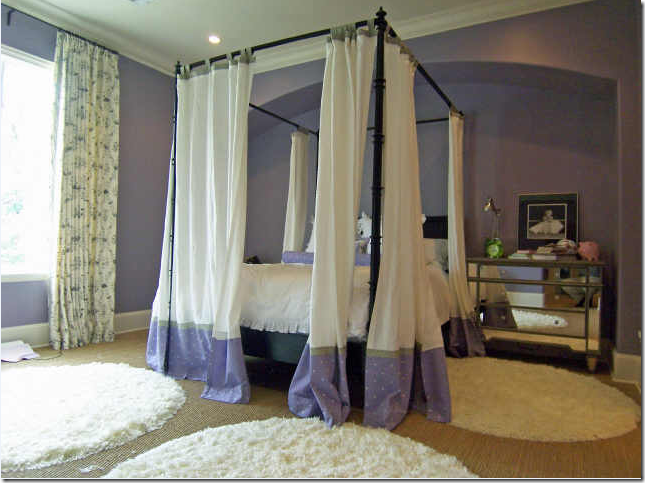 This mother in River Oaks put down several round soft rugs in her baby’s room to soften the horrid seagrass! But, this is a cute idea if you are concerned about your baby’s tender knees.
This mother in River Oaks put down several round soft rugs in her baby’s room to soften the horrid seagrass! But, this is a cute idea if you are concerned about your baby’s tender knees.
Custom Cut Seagrass: When buying a seagrass rug, I always stress to get a custom cut rug. That is, have an installer come to your house and make a template of the room where the rug is to be placed. The rug should fit around the perimeter of the room – following all the curves and corners of the room about 3 to 10 inches away from the wall. The amount of wood you want showing is a personal preference. Myself, I prefer the rugs to be just 2 to 5 inches away from the walls. When cutting the seagrass around a fireplace hearth – the rug should fit snug up to the hearth – no more than one inch away from it. Any competent installer will know all this. While custom cut seagrass is a little more expensive than say an 8 x 10 rug from Pottery Barn - the difference in appearance is tremendous and worth every cent. A custom cut rug is just much finer looking and should be the chosen option if at all possible. If a custom cut seagrass is not in your budget, then get the largest sized area rug your room will hold. Good sources for standard rug sizes are Pottery Barn and www.homedecorators.com. In Houston, I order seagrass from two suppliers: Marc Anthony Rugs here. If you do call Marc Anthony, be sure to tell them Joni sent you! And of course, Creative Flooring (713-522-1181) has an extensive supply of all types of natural fiber rugs, including seagrass.
Perfectly custom cut seagrass – notice the space around the wall – just a few inches of wood showing. And notice the way the rug is cut around the fireplace hearth – it follows the hearth, but it is cut 1/2 to 1 inch from the hearth (be sure to cut the rug closer to the hearth than you did to the walls – a very important detail.) Designer: Janewoodinteriors@yahoo.com.
A STRONG argument in favor of custom cut seagrass. In this showcase house, a standard seagrass was used instead of a custom cut one. Notice how on the right side the carpet is pulled almost onto the wall in order to fit to fit the left side around the fireplace. Yet, the large space to the left and right of the fireplace is left bare! A properly cut seagrass that actually fits the room would be so much more appealing. Of course, this was done in the show house for budgetary reasons, but if you can avoid this in your own home, do.
I have lived with seagrass for over 15 years now and can’t sing its praises enough. It seems the perfect floor covering, easy to keep clean, and it maintains its appearance with little or no wear or tear. It’s perfect for a casual decor or a fancier room and since it’s flat you can layer a dressier area rug over it. I have had no problems with my rugs. The seams have all held and pet stains are easily removed as opposed to sisal or coir. No one in my family has ever complained about the feel of the rugs, not my crawling daughter, or my husband who likes to lay on the floor with a pillow and watch TV, or my dogs who can usually be found snoring on the seagrass. But mostly, I just love the way it looks, the way it smells, the way its natural texture is the perfect foil for silk or velvet or linen. Wall to wall, it is at is loveliest. Is it a fad? Hardly. Natural fiber rugs have been used since the 17th century and in Europe, England especially, they have been a mainstay in houses for generations, far longer than in America. Seagrass is definitely here to stay. If you want to take the seagrass plunge, but still have reservations, try it out with a small area rug from Pottery Barn and use it in the entry or the laundry room or the bedroom. You won’t be disappointed!
Following are pictures of natural fiber rugs. While seagrass is my favorite of course, the other fibers available can be quite beautiful – sisals – especially the diamond pattern, rush, and jute, which Pottery Barn is heavily pushing. When choosing a natural fiber rug, while seagrass is the most well rounded rug, others may be better suited for a specific interior, just choose wisely. Avoid sisal and jute when water might be an issue, such as the kitchen or bathroom. Avoid rush where there is heavy traffic. Don’t buy coir if comfort is a concern. In the end – go with your heart. All natural fiber rugs are relatively inexpensive unlike precious Oriental rugs, and therefore they are easily replaced!
Gerrie Bremermann used seagrass in an elegant living room – mixing beautiful French antiques with the casual seagrass rug. Gorgeous!
In this large living room, one long seagrass was used for the entire room. Notice how the natural color of the seagrass adds another element to the palette.
Wall to wall seagrass in a Houston bedroom – a typical look for Houston designers: monochromatic, pale colors, a mixture of French antiques and painted pieces, slipcovers, upholstered headboards, and curtains with natural textured shades. I adore the lantern over the wine tasting table – charming!!!!
Here Jeffrey Bilhuber used two seagrass rugs, one for each side of the sofa I suppose! Linen slipcovers and seagrass seem linked to each.
 Because seagrass is a flat weave, area rugs can be layered on top of them – creating a dressier look if desired.
Because seagrass is a flat weave, area rugs can be layered on top of them – creating a dressier look if desired.
Lars Bolander frequently uses seagrass – as he did in his former house.
 In this house, Ginger Barber paired slipcovers and antiques with seagrass – a signature look for this popular Houston designer.
In this house, Ginger Barber paired slipcovers and antiques with seagrass – a signature look for this popular Houston designer.
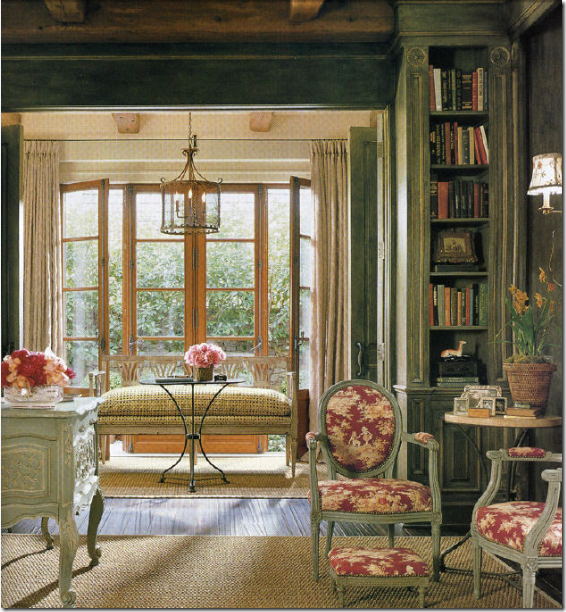 Exquisite French antiques and wonderful painted bois paneling mixes with the natural fiber seagrass rugs.
Exquisite French antiques and wonderful painted bois paneling mixes with the natural fiber seagrass rugs.
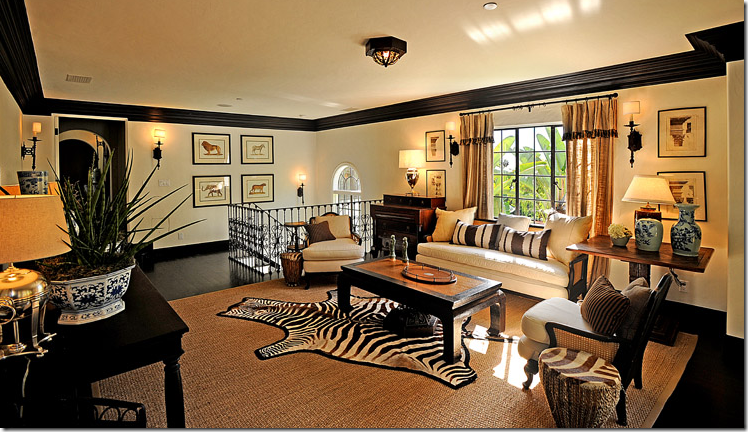 Here a zebra rug is layered on top of the seagrass in an upstairs family room.
Here a zebra rug is layered on top of the seagrass in an upstairs family room.
Seagrass custom cut to fit all the corners of the room – again the Houston look – are you beginning to recognize it?
Phoebe Howard used seagrass in a dressed up family room.

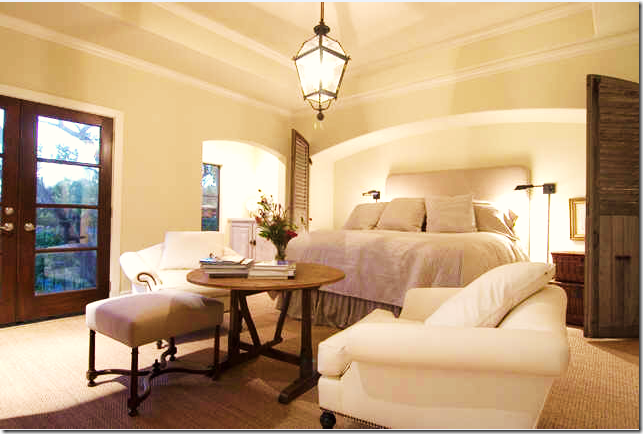 Seagrass, calm and cooling in this bedroom. I just love this look! Did you recognize the Houston factor here?
Seagrass, calm and cooling in this bedroom. I just love this look! Did you recognize the Houston factor here?
 Sisal is not recommended for stairs because of it being slippery, but so many people I know put seagrass on their stairs with no problems at all. Above – seagrass is held into place with iron rods. Though pretty, the rods really are not necessary when using seagrass on stairs.
Sisal is not recommended for stairs because of it being slippery, but so many people I know put seagrass on their stairs with no problems at all. Above – seagrass is held into place with iron rods. Though pretty, the rods really are not necessary when using seagrass on stairs.
In this charming dining room – I think I would have cut the seagrass around the cabinet – it looks unbalanced this way, I think. Darling room – I love the curtains. Yes, Houston!
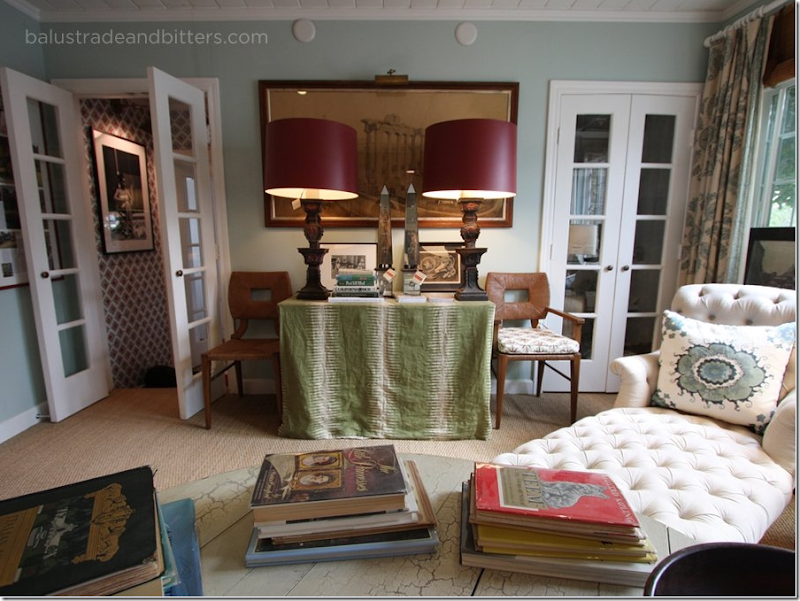 In Peter Dunham’s office, he used seagrass, wall to wall – but it looks like no quarter round molding was added. I love going into a shop where seagrass is laid wall to wall. Whenever I do, I know I am going to love its inventory! I adore this room. This picture came from the new web-magazine – www.balustradeandbitters.com. Be sure to read their interview with Dunham – it was fascinating!!!!!
In Peter Dunham’s office, he used seagrass, wall to wall – but it looks like no quarter round molding was added. I love going into a shop where seagrass is laid wall to wall. Whenever I do, I know I am going to love its inventory! I adore this room. This picture came from the new web-magazine – www.balustradeandbitters.com. Be sure to read their interview with Dunham – it was fascinating!!!!!
Even Miles Redd gets on the seagrass bandwagon. Though this is classic and not the typical Redd look – this is one of my favorite of his projects – I absolutely love this bedroom – the painting, the wallpaper!!!
In the Octagon House, Tami Owen layered a pale rug over wall to wall seagrass.
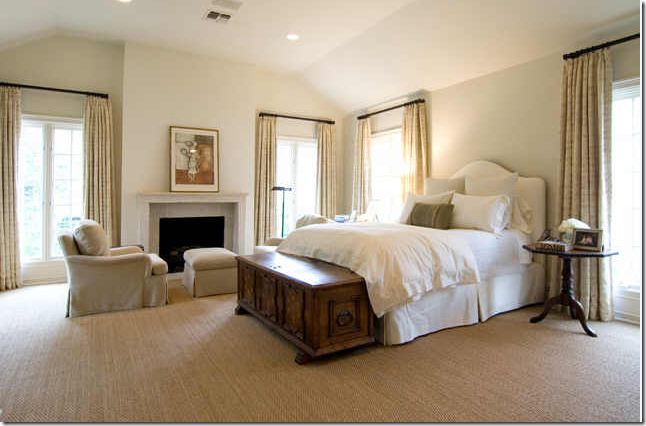 Wall to wall seagrass in a Houston bedroom – the former house of Carol Glasser – stripped of all its beautiful Bennison linen.
Wall to wall seagrass in a Houston bedroom – the former house of Carol Glasser – stripped of all its beautiful Bennison linen.
And the same master bedroom when Carol Glasser lived there – wall to wall seagrass, of course. Which do you like better, the pared down room, or the Bennison-to-the-max room?
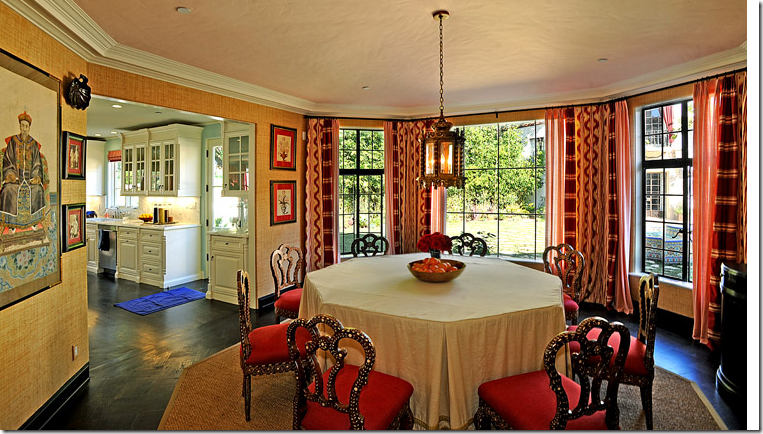 Here the traditional seagrass was cut in an octagon to follow the shape of the room and table.
Here the traditional seagrass was cut in an octagon to follow the shape of the room and table.
 In this client’s living room, I used seagrass, custom cut. Notice how closely the seagrass was cut around the fireplace hearth.
In this client’s living room, I used seagrass, custom cut. Notice how closely the seagrass was cut around the fireplace hearth.
Charles Faudree used seagrass in a living room in a beach house – along with trendy suzani and zebra fabrics!
The antique shop 2620 is one of my favorite haunts in Houston. When seagrass is laid wall to wall in a shop, I’m for sure going to love it’s stock! This area of 2620 is Caroline Ellsworth Antiques here – a fabulous place to look for fine antiques. Hmmm….I am trying to remember if I have ever seen a prettier chandelier. Nope! Lately I am obsessed with chandeliers made of gilt wood mixed with crystals for some odd reason.
Lars Bolander’s Swedish house, wall to wall seagrass, layered with a cow hide.
A charming bedroom in a 100 year old Galveston house mixes linen bedding and wall to wall seagrass.
In this fancy family room, Charles Faudree used seagrass with important French antiques, showing how perfectly the two go together!
Robert McAlpine used Italian antiques and seagrass, another great pairing. Love this man!
The master of embellishments, major talent Barry Dixon used seagrass on a contemporary stairway – notice the trim, nail heads! Amazing. He continue the seagrass through the living area – also bound in nail heads.
At Charles Faudree’s country house, he used seagrass and checks along with French and Swedish antiques.
At David Easton’s weekend house, he used seagrass in this master bedroom. That mirror is so gorgeous! Easton’s country house was a inspiration for many designers – when he sold the house, he held an auction and everything in the house went under the hammer, everything!
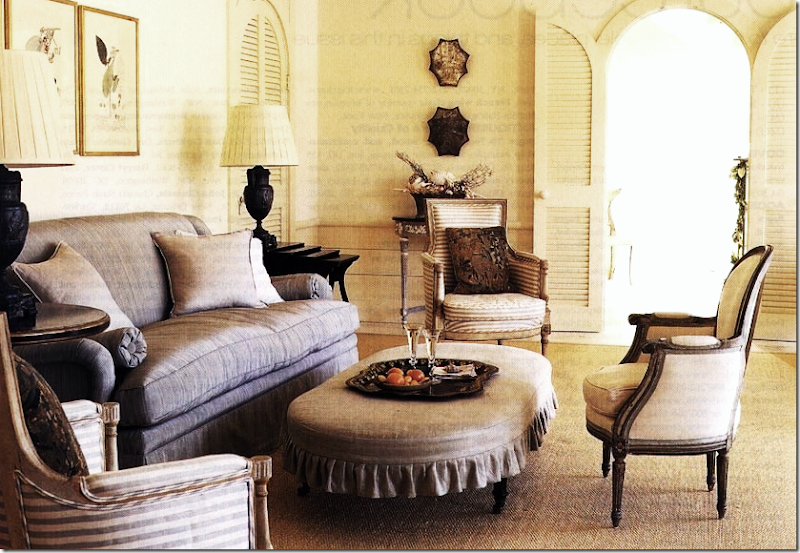 At a Florida guest house, Suzanne Rheinstein used classic seagrass mixed with beautiful French antiques and her famous racetrack ottoman.
At a Florida guest house, Suzanne Rheinstein used classic seagrass mixed with beautiful French antiques and her famous racetrack ottoman.
Windsor Smith uses seagrass in her own living room – along with white slipcovers and exotic furniture.
Atlanta Interior Designer Dan Carithers used seagrass in this very, very beautiful living room, filled with unique antiques. The fireplace is stunning – and the sconces are wonderful – I LOVE this room! I know I say that a lot, but I LOVE this room!
Miles Redd does slipcovers and seagrass in a country estate.
Seagrass sets off a small nook on the stair landing. Notice the gorgeous wood floor boards – hard to cover those up! Designer Matthew Patrick Smyth.

In this client’s home I layered a very pale antique rug over a custom cut seagrass. The rug adds a touch of dressiness to the living room.
 In the Bennison House, notice how the custom cut seagrass was handled between the two rooms. The area between the door opening was left bare. Again, perfectly handled. Love the dog’s lovie.
In the Bennison House, notice how the custom cut seagrass was handled between the two rooms. The area between the door opening was left bare. Again, perfectly handled. Love the dog’s lovie.
One of the my favorite rooms in Southern Accents this year – a large seagrass covers most of the living room and is the perfect backdrop for all the white slipcovers and zebra rug!
This room was shown with slipcovers that had shrunk in Design Elements #2. Here is the gorgeous linen fabric that was hiding under the shrunk slipcovers. Wall to wall seagrass goes extremely well with tortoise shell blinds. Design by Carol Glasser.
Seagrass on stairs – again custom cut, just a few inches from the wall and the binding is done in a neutral color.
Trend laden apartment by Alex Papachristidis. Fortuny and ikat and suzani – love it!!!
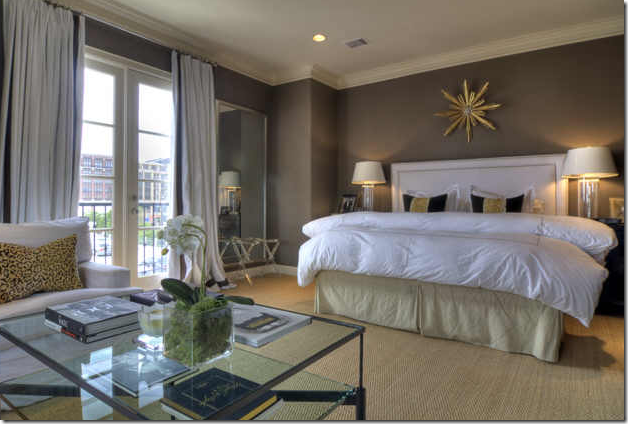 Houston interior designer Lisa Epley’s own bedroom – white slipped chairs and seagrass – that winning combination. Seagrass surprisingly looks really good in a dark gray room.
Houston interior designer Lisa Epley’s own bedroom – white slipped chairs and seagrass – that winning combination. Seagrass surprisingly looks really good in a dark gray room.
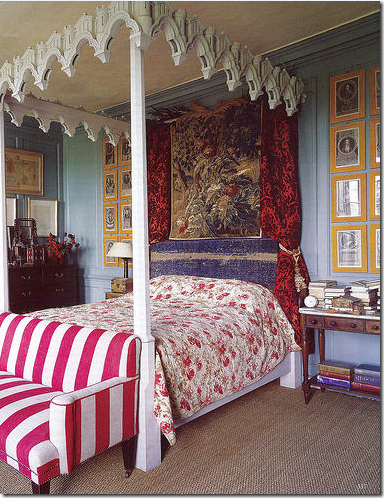 This bedroom made the cover of The World of Interiors: a wonderful old country home in England, with of course, seagrass!
This bedroom made the cover of The World of Interiors: a wonderful old country home in England, with of course, seagrass!
A look to love – French settee, blue and white checks, seagrass and high heels! Suzanne Rheinstein.
The Queen of white linen slipcovers and seagrass, Lauren Ross, in her Austin house (any excuse to show this picture again!)
The following pictures show natural fiber rugs other than seagrass. Each different natural fiber rug has a certain appeal. To me, of course, I prefer seagrass for all the reasons stated in the first paragraphs, but that said, I do love all the natural rugs in general. The apple matting type is especially appealing to me aesthetically. Sisal is wonderful in a dressy living room. And the diamond patterned sisal popularized by Stark is made for someone who wants something more interesting than just plain sisal or seagrass:
This rug is apple matting – a thick natural fiber rug made out of rush – with lots of beefy texture. Apple matting is more popular in England where it has been used for centuries, but it is slowly becoming more popular in the states. Love the lanterns and slips too!
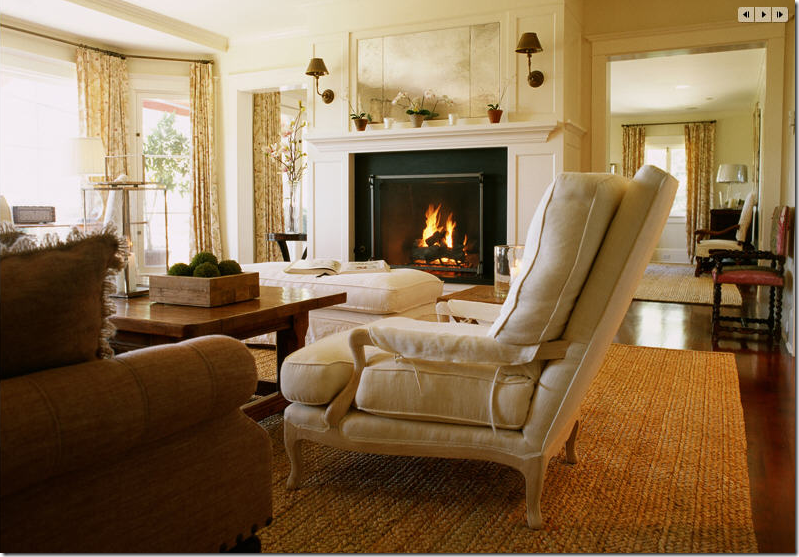
And the living room next to the above dining room, both rooms by Peter Dunham.
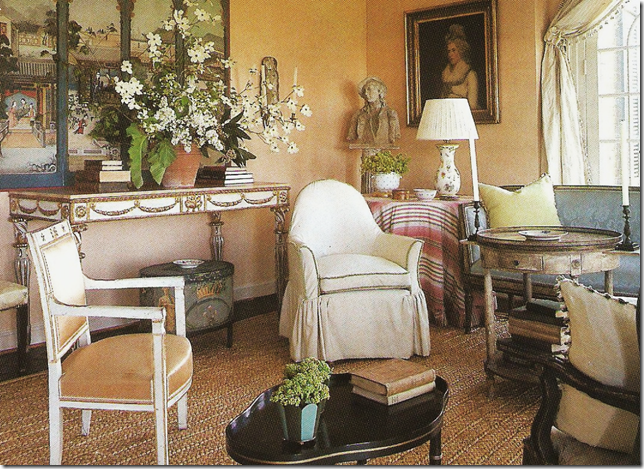 Years ago Suzanne Rheinstein used apple matting in this living room.
Years ago Suzanne Rheinstein used apple matting in this living room.
The other side of Rheinstein’s apple matting living room. Notice the exquisite antiques and fabrics – all dressy, yet paired with the simplest of floor material. Just gorgeous!
More rush or apple matting. Again, dressy antiques, highly textured rug. This thickness of this textured rug makes a huge statement.
In this elegant bedroom with Robert Kime linen on the French chairs and hand painted silk wallpaper, a natural fiber rug was used – not sure if this is apple matting or jute, but whatever it is, it is a beautiful choice.
Sisal is a good choice in sleeker, more contemporary interiors. Here, a room by Matthew Patrick Smyth shows sisal mixed with velvets and linens.
Here in a dressy setting, this light sisal rug seems to be the correct application.
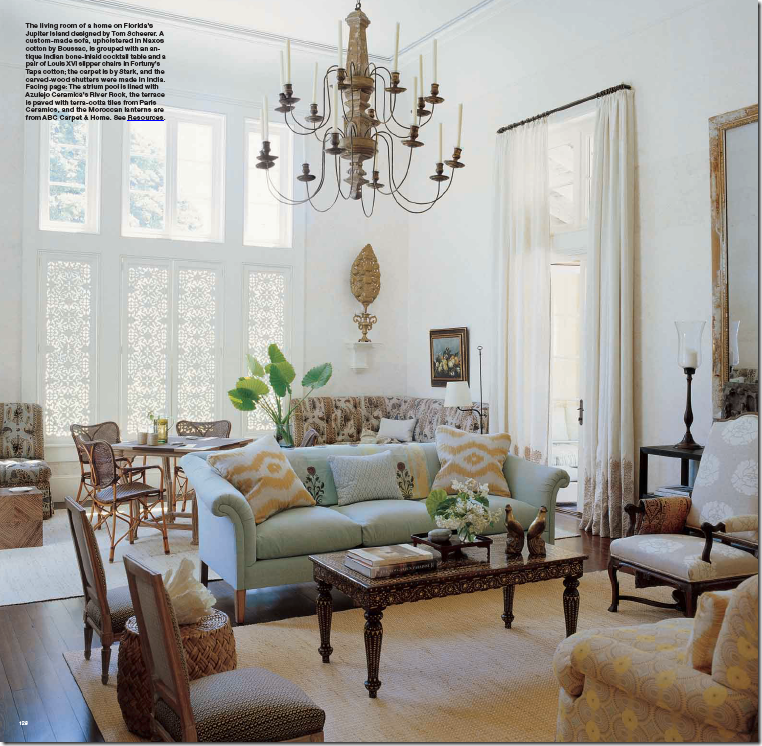 In Florida, Tom Scheerer used two Stark rugs in an eclectic living room. I love his choice of yellows and pale blues. Such a pretty “beach” house!
In Florida, Tom Scheerer used two Stark rugs in an eclectic living room. I love his choice of yellows and pale blues. Such a pretty “beach” house!
Dressy sisal used in the dining room with hand painted wallpaper and slipped chairs mixed with leather chairs in an interesting combination.
In this beach house, Charles Faudree used a thickly woven rug placed atop black hardwoods for a high contrast effect. Isn’t this beautiful?
Gerrie Bremermann uses the Stark diamond sisal rug in this living room. Though sisal and not seagrass, this look is just as effective and slightly dressier. Glorious painting by Amanda Talley – also currently blogging here. I think Amanda’s painting makes the room, don’t you?
 In this apartment that I designed, I used the diamond patterned Stark carpet in the library.
In this apartment that I designed, I used the diamond patterned Stark carpet in the library.

 Another sisal diamond patterned rug used in this library. This rug has black thread running through it which ties in with the decor nicely.
Another sisal diamond patterned rug used in this library. This rug has black thread running through it which ties in with the decor nicely.
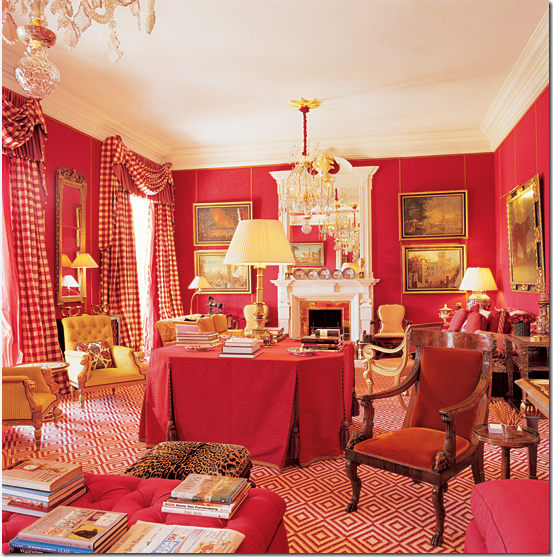 Sisal comes in different colors which is a selling point over seagrass. Here John Stefinidis used the diamond pattern in creams and red.
Sisal comes in different colors which is a selling point over seagrass. Here John Stefinidis used the diamond pattern in creams and red.
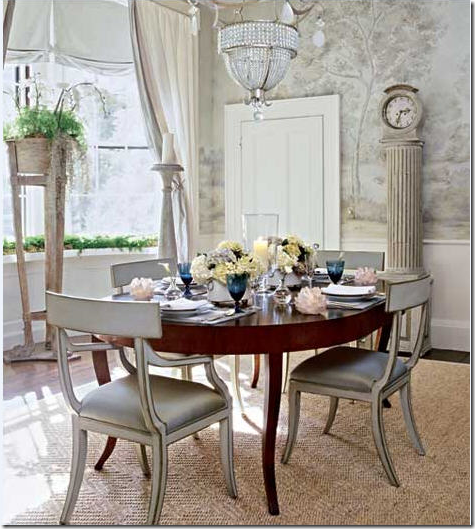 Even in a gray room, this natural fiber diamond patterned rug looks wonderful.
Even in a gray room, this natural fiber diamond patterned rug looks wonderful.
Gerrie Bremermann combined the Stark diamond sisal rug in this family room – with a flat oushak is in the living room.
Alex Papachristidis uses creamy sisal in this NY apartment. I love the zebra layered over the rug but the gold framed prints and the sconces are the true focal points. The sofa and chairs aren’t too shabby either!
Jeffrey Bilhuber used this natural fiber rug – this one looks like it might be a natural fiber/wool blend. I love this room of his – one of my favorites in his portfolio.
 A stunning beach house with sisal carpet. The color of the sisal blends into the headboard’s caning and the wall color.
A stunning beach house with sisal carpet. The color of the sisal blends into the headboard’s caning and the wall color.
Another sisal rug – which matches the color of the chair – Barclay Butera.
Hard to imagine any other floor covering except sisal in this room! I love the orange pops of color in the pillows.
Rush matting – used in extreme juxtaposition to such finery!

The same type of matting used by Bunny Williams at her weekend house.
The living room at Grey Gardens, remodeled by Sally Quinn. Original to the house, the rush matting was found in the attic, sent out for repair and reused by Quinn.
And finally, my own family room, with its seagrass. Each room in my house has seagrass rugs. It’s hard to imagine I will ever change and use something else, but who knows? Anything’s possible. As for my pillows, the decision on what to do about them is on hold until September. You all gave me wonderful ideas and I am going to use one of them! Just not sure which yet. Be sure to watch here for the fourth installment of Top Ten Design Elements, coming soon! Does anyone have a clue what it might be?
And – the new Skirted Roundtable with the absolutely adorable Anna Spiro from Absolutely Beautiful Things is up and ready to listen to here. Enjoy it – I know you will – she is sooo cute!!!

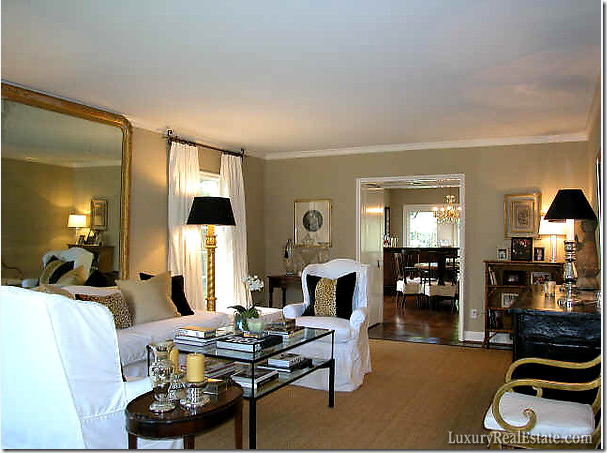

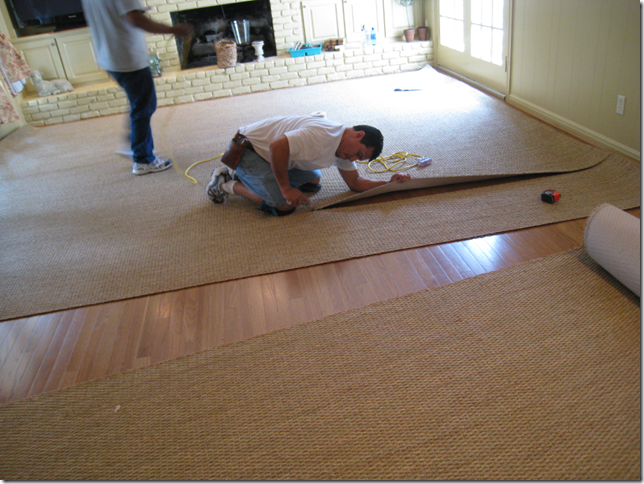
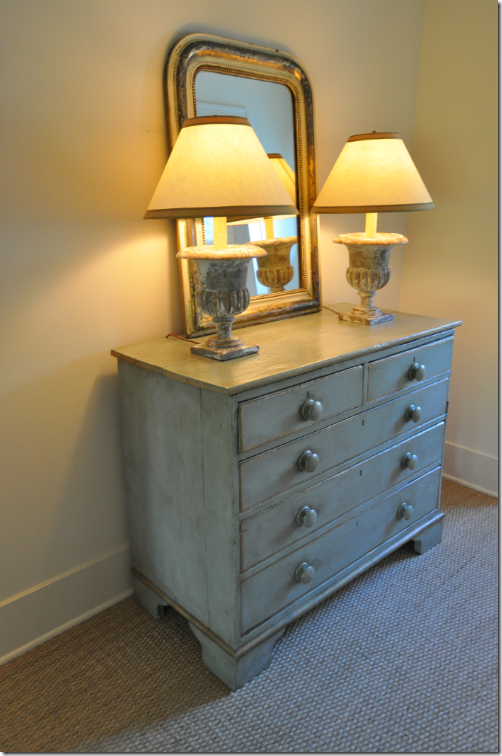

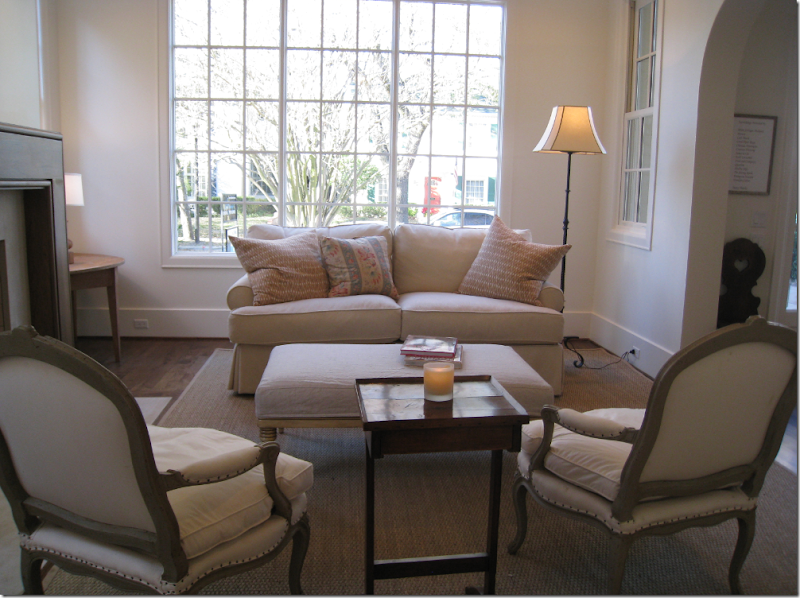
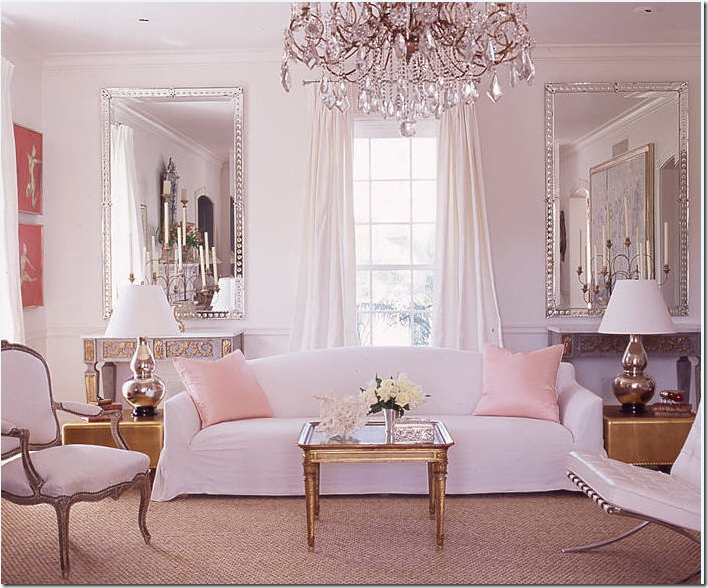
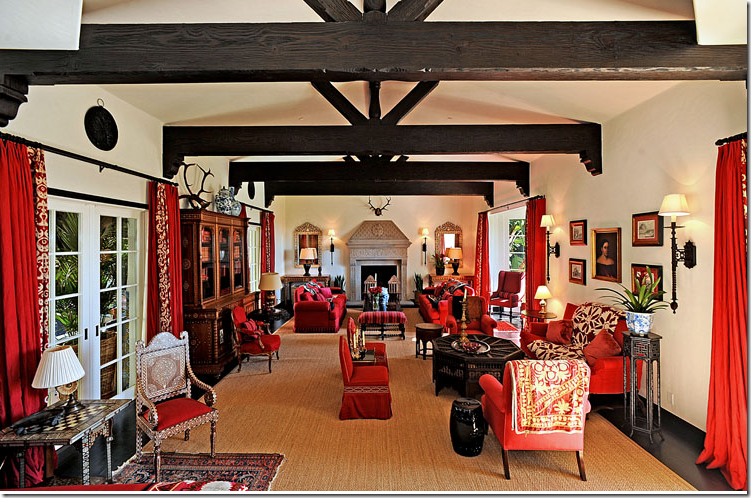


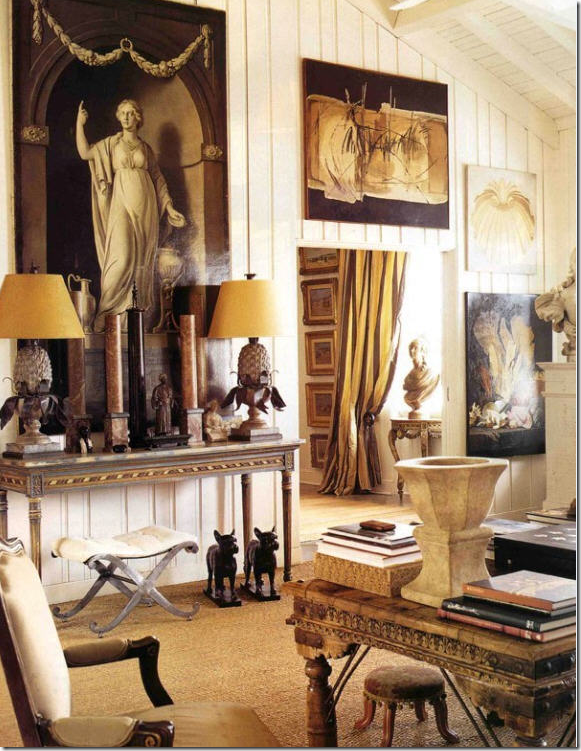

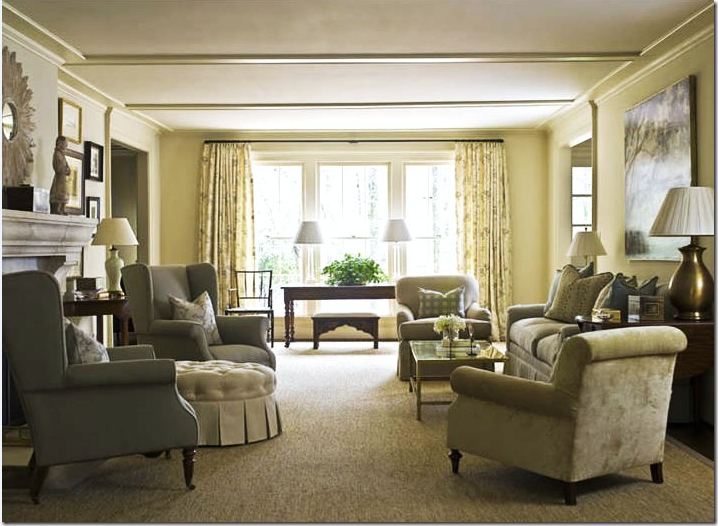

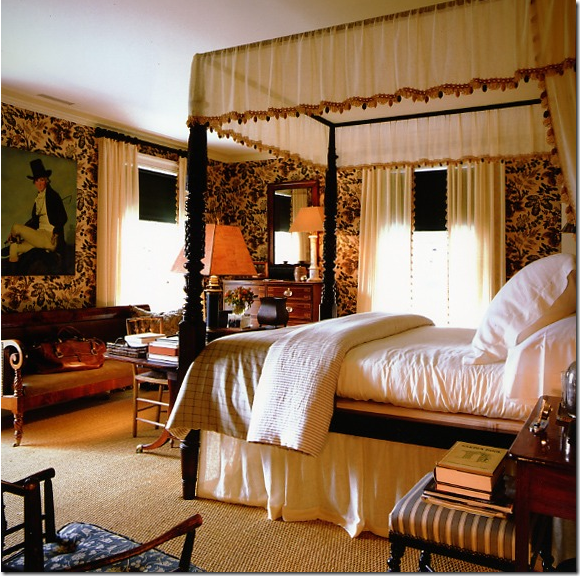
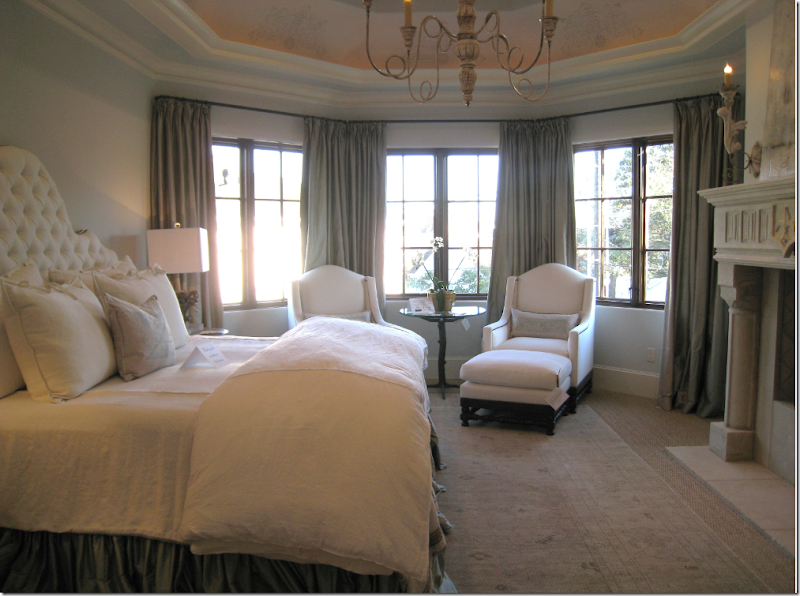








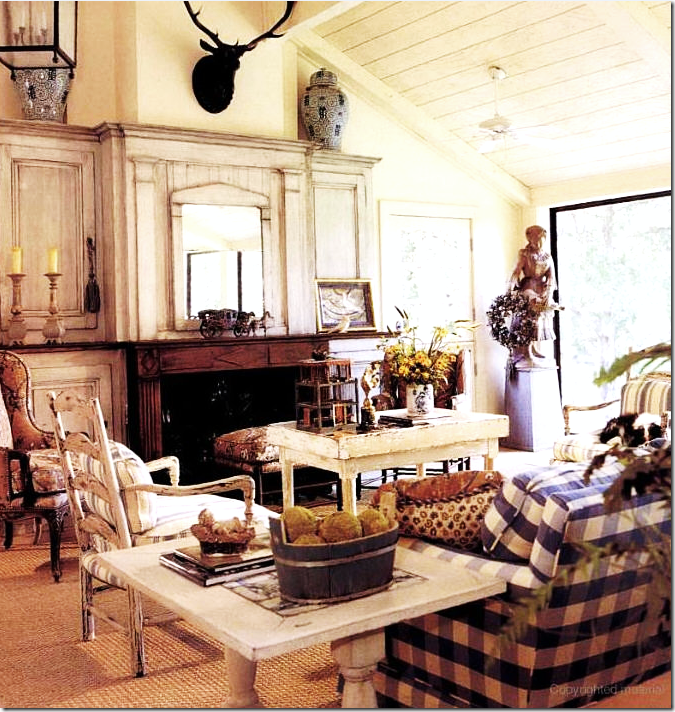

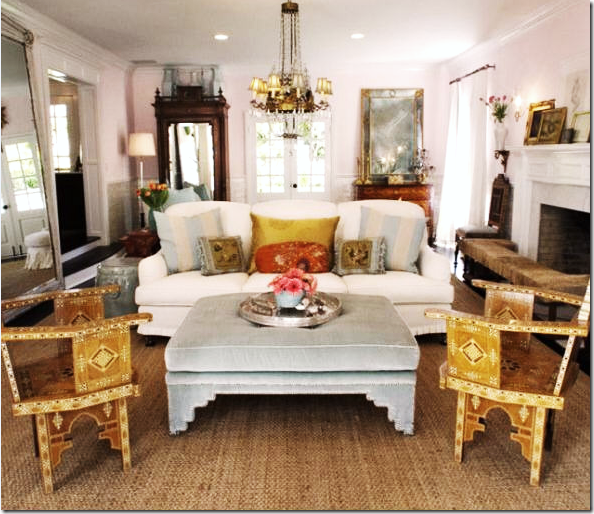

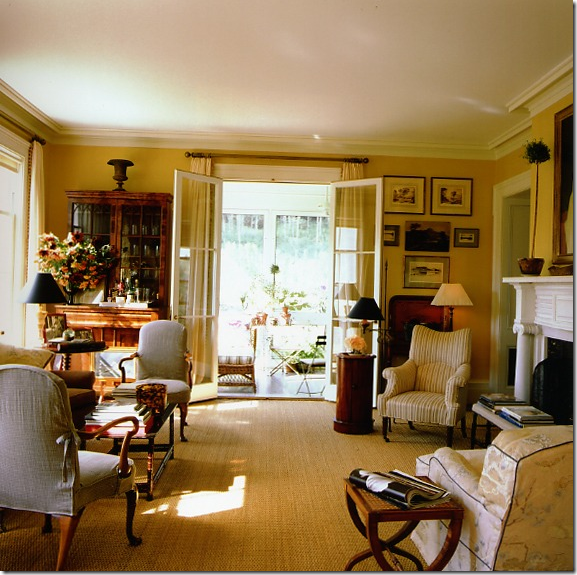
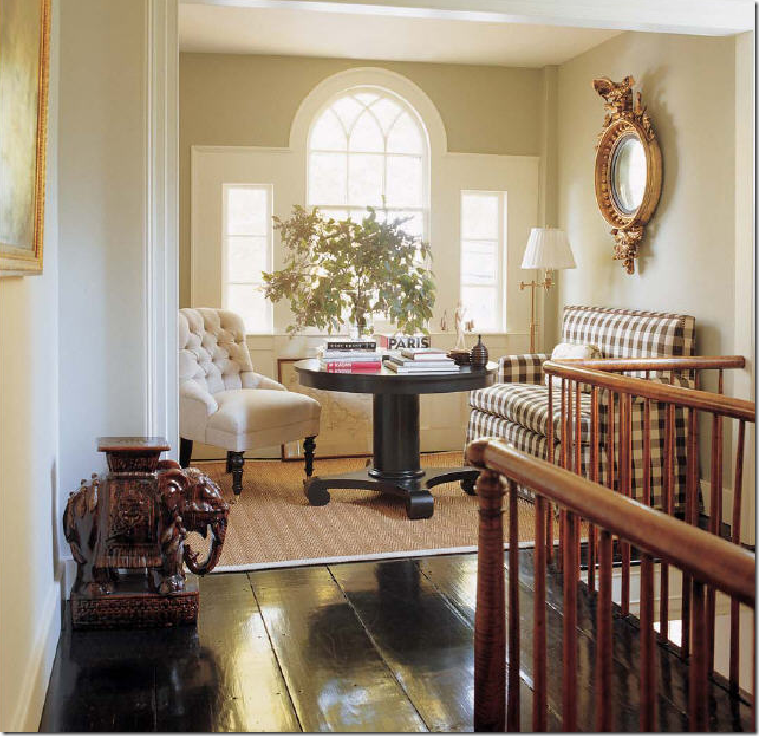

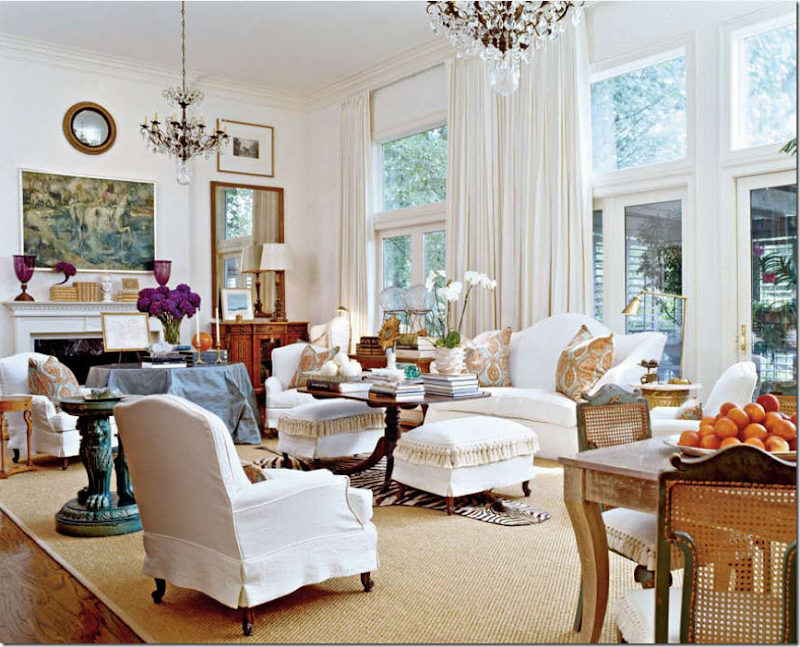
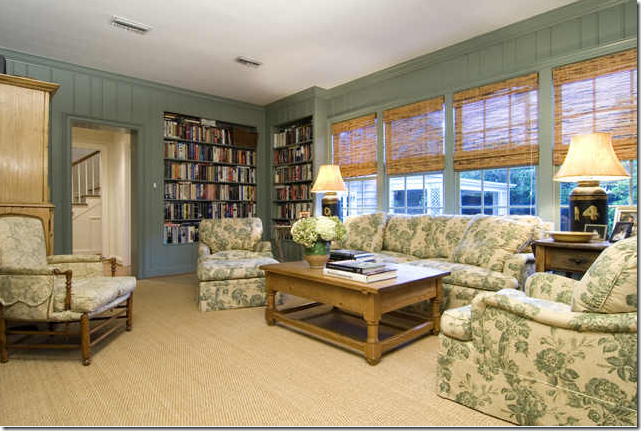

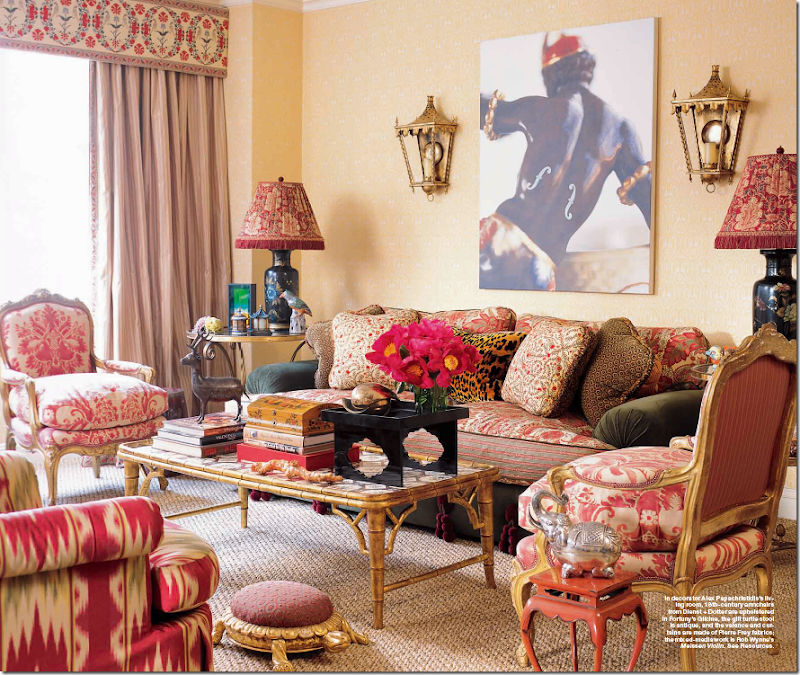


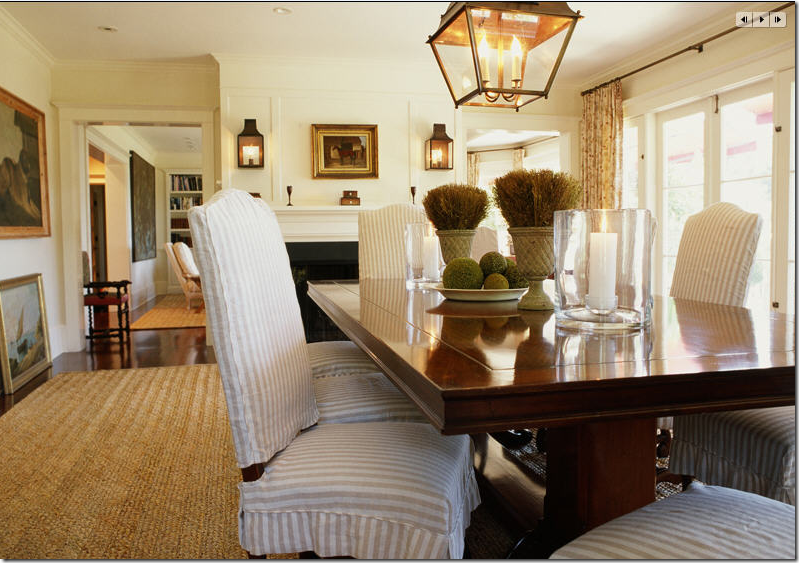
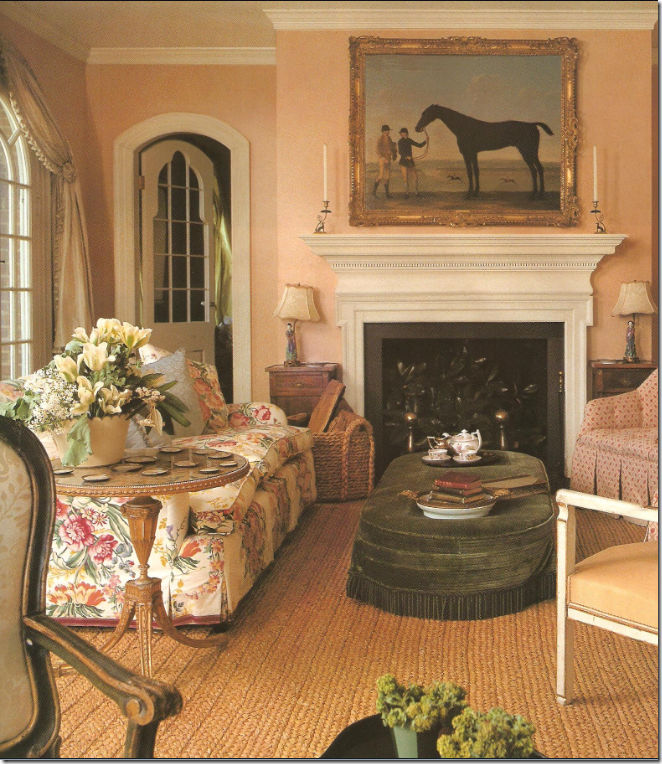
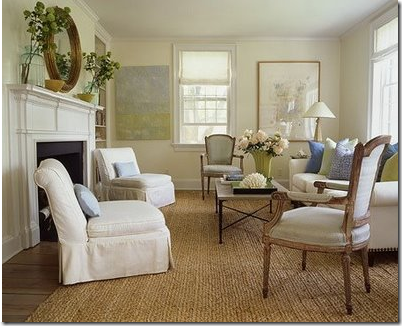
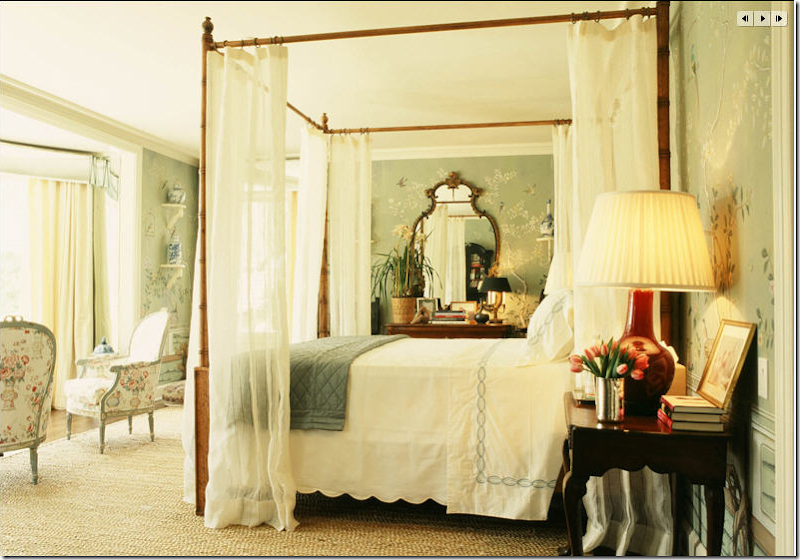
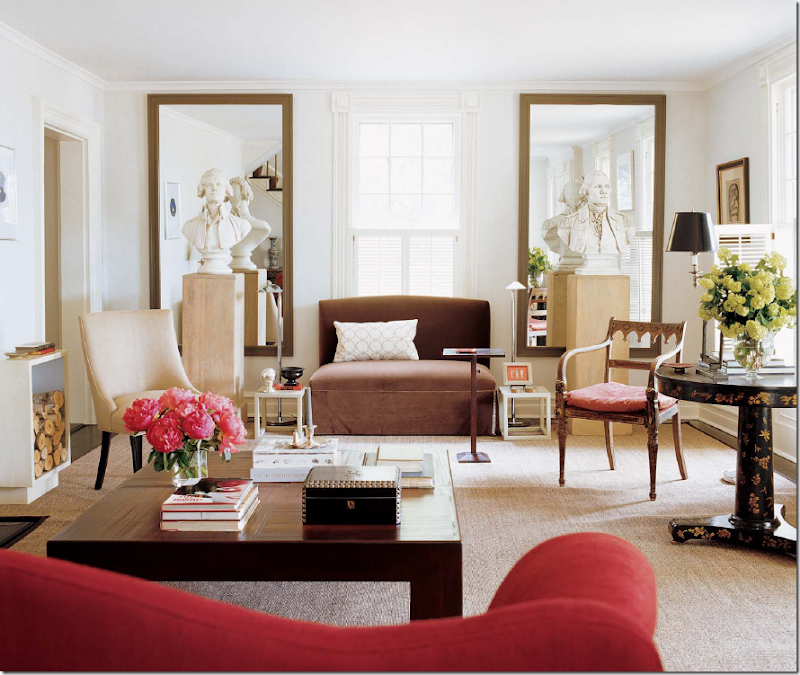
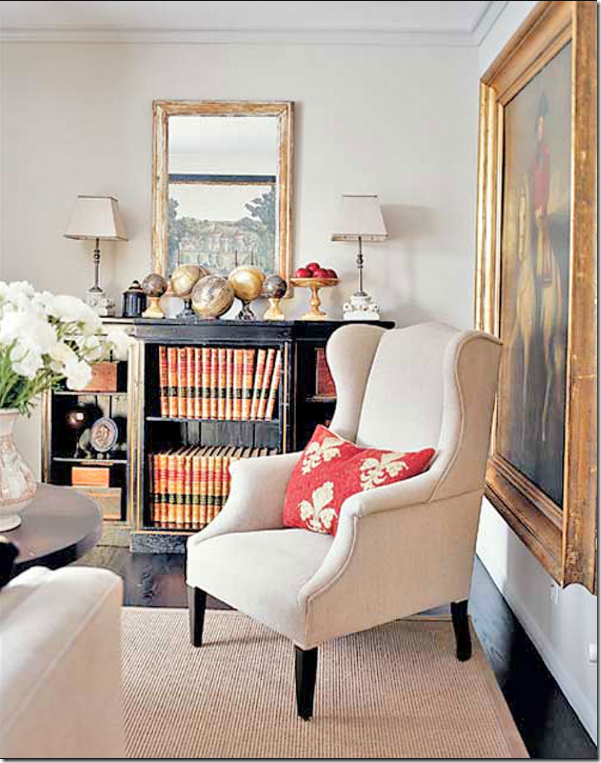




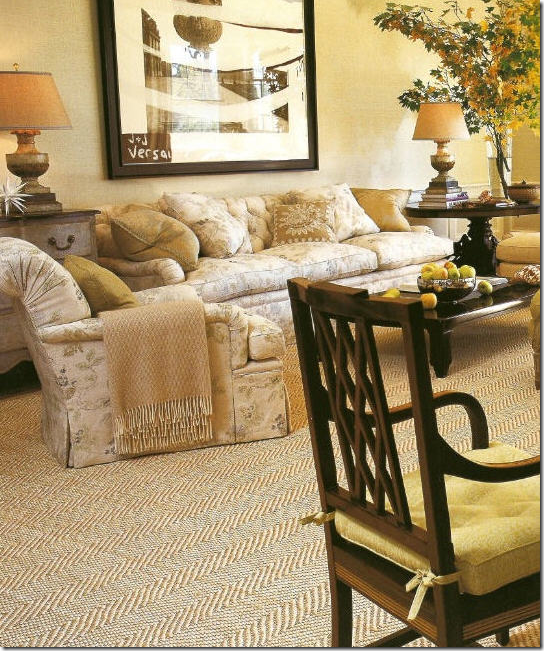


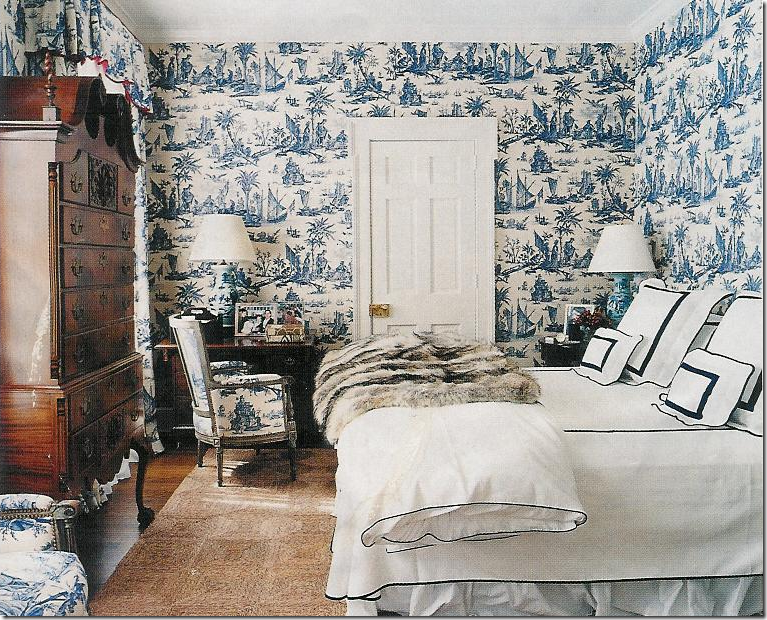
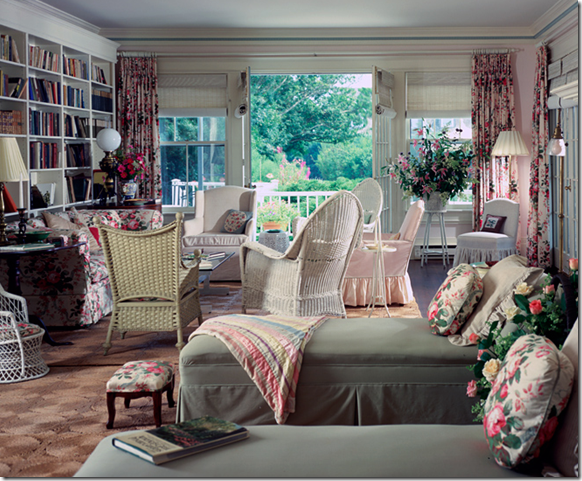
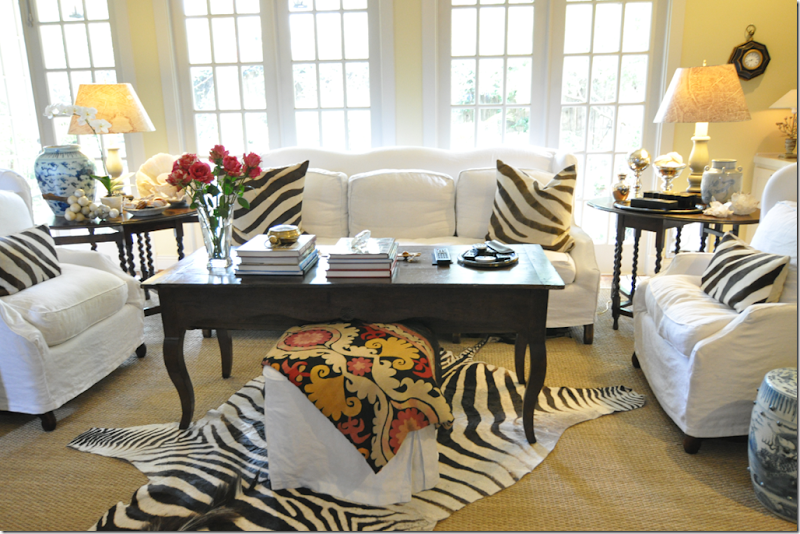


No comments:
Post a Comment